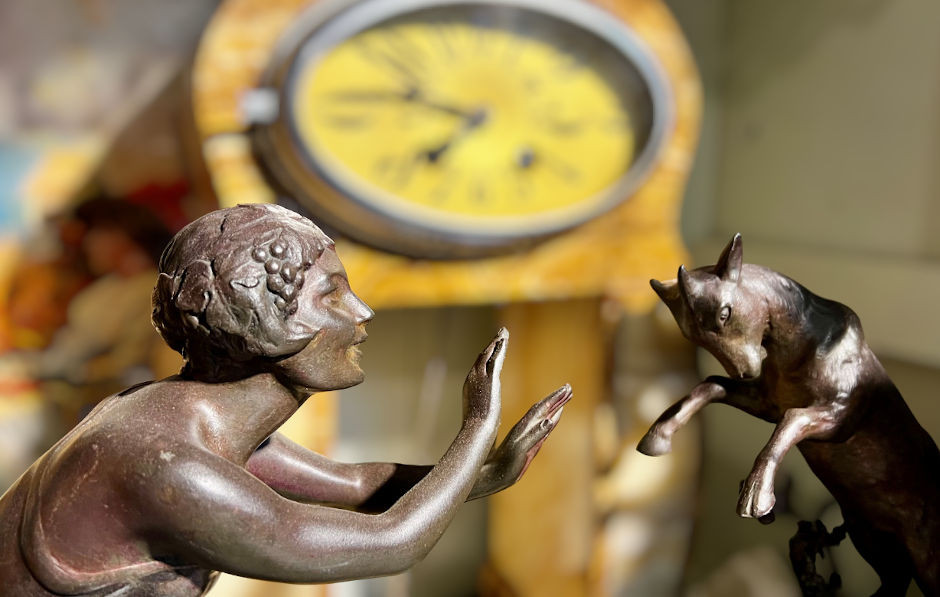
Associated with the 1920s and 30s, the Art Deco movement has been in and out of favour over the years. Here, we take a deep dive into this wonderfully flamboyant period.
What is art Deco?
The art Deco movement was a Decorative style that cut across furniture, Decorative arts and architecture. It also influenced visual arts including painting and sculpture. Originating in France after the First World War, and initially known as ‘le style moderne’ (modern style) it became known as art Deco – a contraction of ‘arts Decoratifs’ in the 1925 Paris Exposition Internationale des Arts Decoratifs et Industriels Modernes, where it was first exhibited.
Art Deco movement characteristics
Encompassing the glamour of the modernism the world was experiencing post World War I, the art Deco movement was characterised by streamlined shapes and straight lines in both architecture and furniture design. Classical influences and strong, geometric lines also characterise the movement, as did the use of innovative new materials such as Bakelite plastic.
Why did the art Deco movement start?
Following World War I – the ‘war to end all wars’ – art Deco grew from the need to embrace the future with positivity, and all that it offered. While it originated in Europe, the start of the art Deco movement coincided with a huge period of development and progress in the US and its influence is unmistakable in the architecture of the time (think the Chrysler Building).
When did the art Deco movement end?
Art Deco was a relatively short lived design movement, coming to an end in 1939 with the start of World War II. With Europe facing its second war in two decades, and the US in the midst of The Great Depression, visible signs of indulgence and excess were no longer considered appropriate to world events.
Art Deco furniture
When considering Art Deco furniture, think Poirot’s apartment in David Suchet’s iconic portrayal. Geometric shapes, exotic woods, inlaid and lacquered pieces, high gloss finishes, sunburst motifs, animal skins… the list is endless, and every design feature points to the indulgence of the era. Art Deco furniture is available for every room in the home, from bedrooms to lounges and dining rooms to kitchens. Drawers are large, as were beds and many pieces were finished with accents of metal such as gold and copper. Cocktail tables are particularly of the period, especially glass-topped examples with metal clasps and the French club chair is also typical. Accessories of the time, including clocks, radios and photo frames can be found manufactured from Bakelite, the world’s first synthetic plastic often made in muted colours of red, green, orange, yellow, white and black.
Art Deco jewellery
Platinum and white gold were popular metals during this time, and designers favoured boldly coloured precious gemstones such as rubies, emeralds and sapphires, as well as brightly coloured enamels to give a sharp contrast against the metal. Art Deco jewellery features diamonds cut geometrically, into triangles, trapezes and baguettes and, as stone cutting techniques developed, more and more elaborate pieces were produced. Art Deco engagement rings are particularly distinctive, often featuring stark, geometric designs with lots of character. The designs are often symmetrical to represent the coming together of two partners in a strong and united marriage.
Art Deco pottery
The influence of the Art Deco movement in pottery and ceramics can be seen in both shape and decoration, with a prevalence of Egyptian influenced form and motif – unsurprisingly as the movement coincided with the discovery of the Egyptian tombs and the great days of archeological discovery. Commonly repeated motifs include stylised rising and setting suns, chevrons and geometric patterns with rectangular shapes and repeated lines. Clarice Cliff epitomises Art Deco ceramic design with her triangular handles and bold colours but other notable designs/designers of the era include Eric Slater (Shelley potteries), ‘Gaylee’ from Royal Doulton, and Belmont (Royal Albert). Today, Art Deco pottery and ceramic pieces can sit perfectly harmoniously in contemporary settings and their popularity doesn’t seem to be waning.
Art Deco at Hemswell Antique Centres
If you are looking for specific authentic pieces but you aren’t sure which aesthetic movement you need, you will find lots of inspiration at Hemswell Antique Centres. From the Regency and Georgian periods, to Art Deco, Arts and Crafts and even Vintage and Industrial, we have dealers specialising in every era.